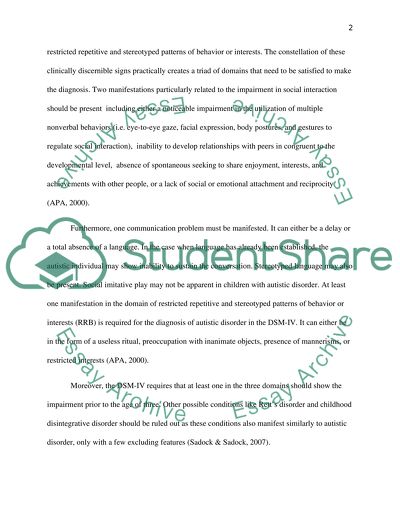Cite this document
(“Autism Spectrum Disorder: Changing the Patterns Research Paper”, n.d.)
Retrieved from https://studentshare.org/health-sciences-medicine/1404455-the-changes-in-the-diagnostic-criteria-for-autism
Retrieved from https://studentshare.org/health-sciences-medicine/1404455-the-changes-in-the-diagnostic-criteria-for-autism
(Autism Spectrum Disorder: Changing the Patterns Research Paper)
https://studentshare.org/health-sciences-medicine/1404455-the-changes-in-the-diagnostic-criteria-for-autism.
https://studentshare.org/health-sciences-medicine/1404455-the-changes-in-the-diagnostic-criteria-for-autism.
“Autism Spectrum Disorder: Changing the Patterns Research Paper”, n.d. https://studentshare.org/health-sciences-medicine/1404455-the-changes-in-the-diagnostic-criteria-for-autism.


